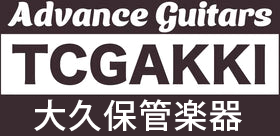The "Varitone" electric saxophone system made by H.&A.selmer Inc. (= the so-called Amesel), which appeared in 1965, was known among some enthusiasts and collectors, but the number of existing instruments is extremely small, and the entire system, including the amplifier, is not complete. The details of the "Varitone" have remained largely unknown. Even its existence was about to be forgotten.
THE used music store had acquired a complete Amesel "Varitone" tenor saxophone system in excellent and beautiful condition from an overseas route several years ago. However, the saxophone itself wasNewHowever, the electrical system was only partially working because it was more than 40 years old.
The saxophone system had been in a state of "storage" for some time, but with the help of our expert technical staff, the system is finally on the verge of a complete restoration, and we have created a special feature page.
We are pleased to present a two-part series of articles on this pioneering electronic wind instrument.
This is a detailed explanation of the "Varitone" that is rarely seen anywhere else in the world.
This instrument is introduced in "SAX & BRASS Vol.10" (published by Ritto Music), p.083 "PRECIOUS HORN Cafe".
